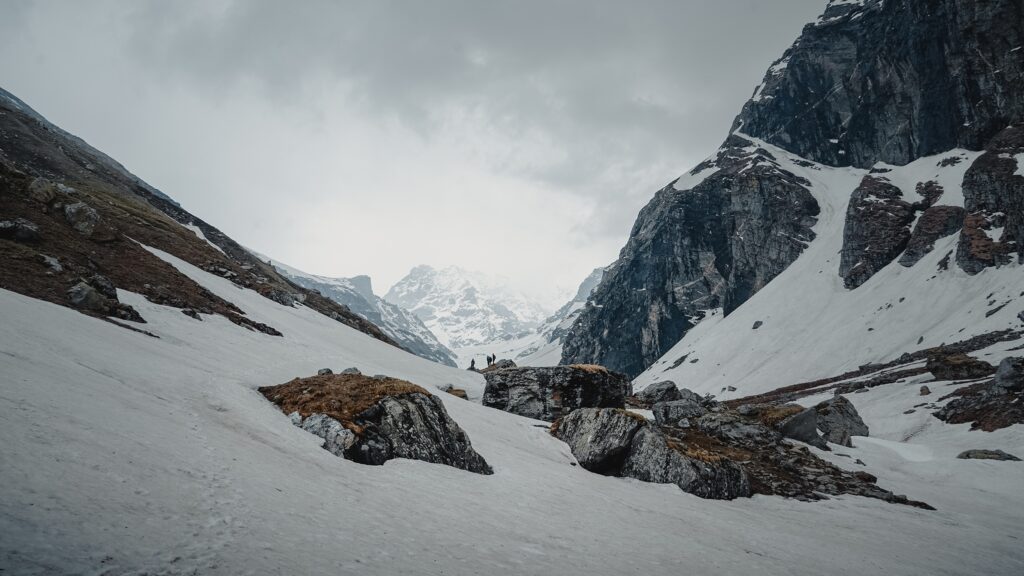Trekking is one of the best ways to explore nature. But it can also harm the environment if not done responsibly. In this blog, we will look at the top 10 treks in India for sustainable travel. These treks are not only beautiful but also focus on protecting the planet. We’ll also give you tips to travel responsibly on each trek.
1. Hampta Pass, Himachal Pradesh – A Sustainable Trekker’s Dream
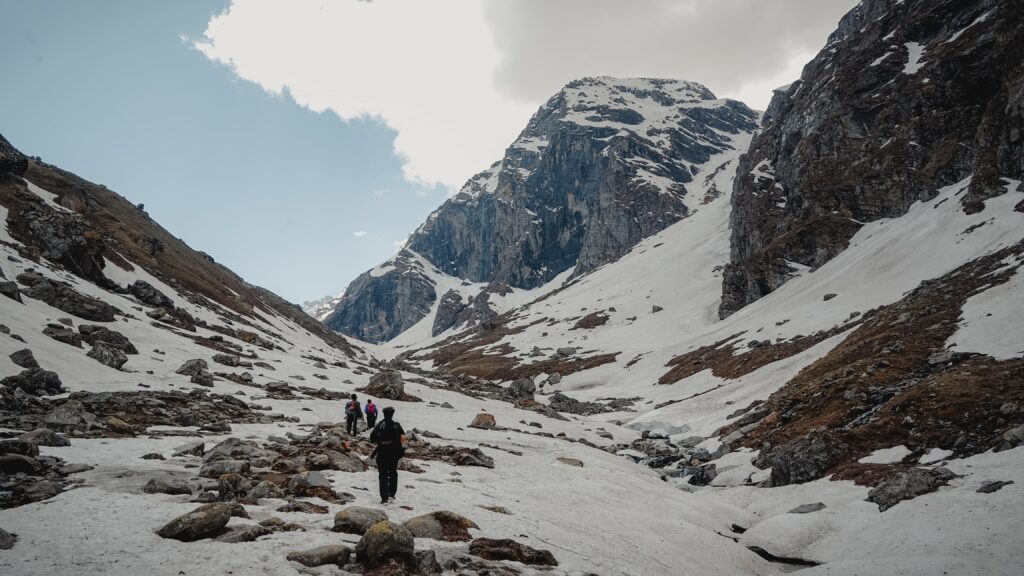
Why it’s special: Hampta Pass is a stunning trek that connects the lush green Kullu Valley to the barren Spiti Valley. This diverse trek is perfect for beginners and offers breathtaking views of two contrasting landscapes. The trek provides a unique opportunity to see the lush greenery of Himachal Pradesh as well as the stark, arid beauty of Spiti Valley.
Best time to go: June to September
Elevation: 14,065 ft (4,290 m)
Elevation Gain: Approx. 4,200 ft (1,280 m)
Trek Distance: 26 km (round trip)
Duration: 4–5 days
How to Reach: Reach Manali by bus or car, and then drive to Jobra, the starting point of the trek. You can hire local taxis or book shared cabs from Manali.
Trek Description:
The trail starts from Jobra and winds through dense forests of pine, birch, and maple trees. The scenic journey takes trekkers along the Rani Nallah River and through picturesque campsites like Balu Ka Ghera. On the third day, you’ll cross the Hampta Pass, where you might encounter snow, even in summer. The trek concludes in Chatru, where you can also visit Chandratal Lake for a serene experience. Hampta Pass is becoming popular, so crowd management is important. Some groups now allow only limited trekkers per season. This helps protect the narrow alpine trail and local wildlife. Among the top 10 treks in India, this route stands out for its breathtaking views and eco-conscious travel experience.
Sustainable Tip:
Travel with local eco-friendly trekking companies. They often use reusable cutlery, avoid plastic, and follow Leave No Trace rules. Learn more about Leave No Trace Principles. You can also read about the ecological efforts in the region on the Himachal Pradesh Eco-Tourism website.
2. Valley of Flowers, Uttarakhand – Trek with Nature’s Vibrance
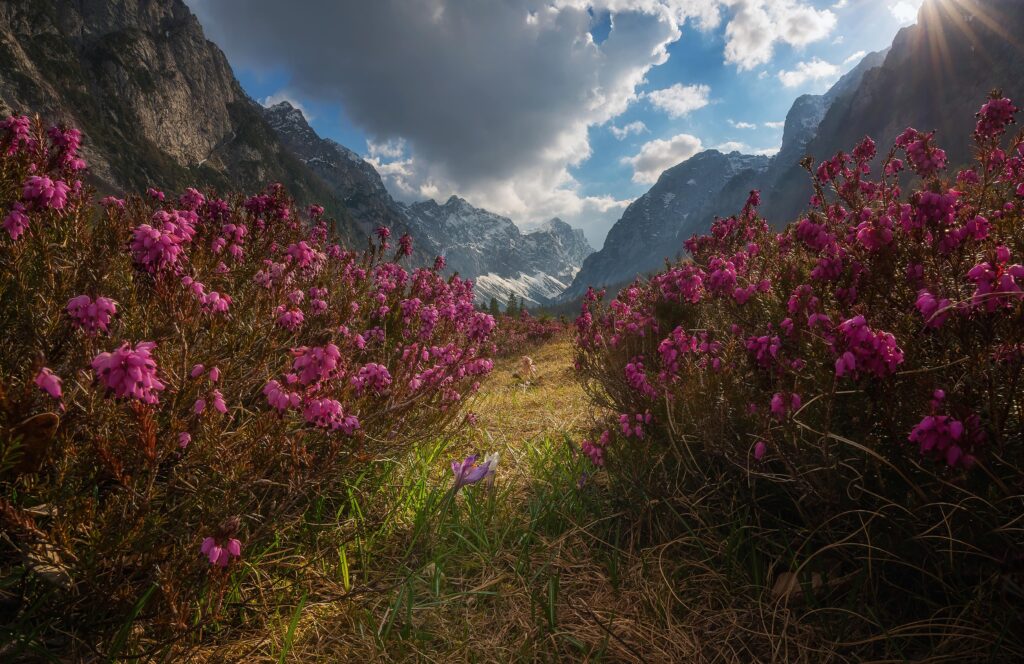
Why it’s special:
A spectacular carpet of rare and exotic wildflowers is the trademark landscape on this dreamy hike, best tackled during the monsoon season (July to September). Over 500 species of flowers bloom against the backdrop of snow-clad peaks, with butterflies fluttering above and birds chirping around. This protected area is also a habitat for Asiatic black bears, blue sheep, and snow leopards—though sightings are rare.
Best time to go: July to early September
Elevation: 12,654 ft (3,850 m)
Elevation Gain: Approx. 3,200 ft (975 m)
Trek Distance: 17 km (Ghangaria to Valley and back)
Duration: 4–6 days
How to Reach: Reach Rishikesh or Haridwar by train or bus. From there, take a shared taxi or bus to Govindghat. The trek begins from Govindghat to Ghangaria (a 13 km hike or pony ride), where most trekkers stay overnight.
Trek Description:
Stay the night in Ghangaria for an early start the next day. The valley opens at 7 a.m., and entry is allowed until 2 p.m. The hike crosses scenic bridges over the Pushpawati River before reaching the heart of the UNESCO World Heritage-listed Valley of Flowers. The Forest Department enforces strict regulations—no camping is allowed inside the park, and there’s a daily cap on visitors. Local guides ensure minimal disruption to flora and fauna, and many now offer reusable water options to avoid plastic waste.
Sustainable Tip:
Stick to the marked trails. The flowers grow in delicate soil, and stepping off-trail can destroy whole patches. For tips on packing light and reducing waste while trekking, visit our eco-friendly packing guide. also Read how UNESCO is supporting conservation in the Valley of Flowers.
3. Tungnath-Chandrashila Trek, Uttarakhand– A Sacred Journey in the Himalayas
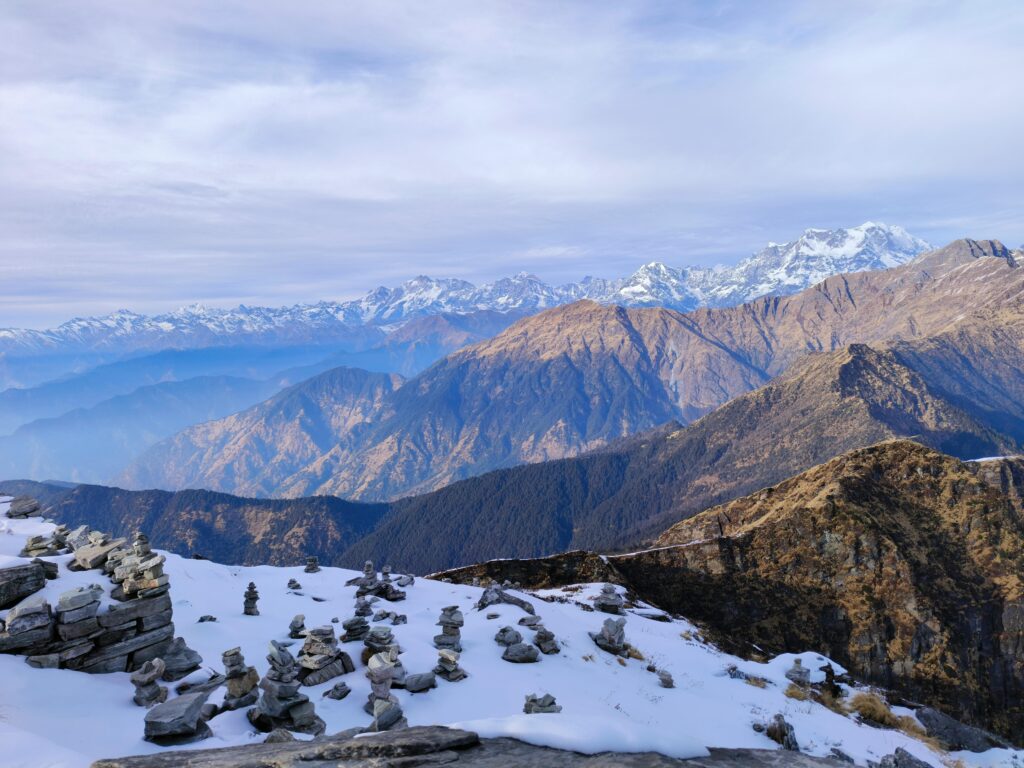
Why it’s special: This trek is not only a spiritual journey but also offers breathtaking panoramic views of the Garhwal Himalayas. It leads to the highest Shiva temple in the world, Tungnath, and culminates at Chandrashila Peak with a 360-degree view of peaks like Nanda Devi, Trishul, and Chaukhamba.
Best time to go: April to November
Elevation: 13,000 ft (3,962 m)
Elevation Gain: Approx. 3,500 ft (1,067 m)
Trek Distance: 12 km (round trip)
Duration: 3–4 days
How to Reach: Reach Rishikesh or Haridwar by train. From there, take a bus or shared taxi to the base of the trek at Chopta.
Trek Description: The trek begins from Chopta, a picturesque hill station, and ascends through dense forests of oak and rhododendron. The trail is well-maintained and gives trekkers a chance to witness the sacred Tungnath temple before reaching the summit of Chandrashila. As this region is gaining popularity, the forest department is focused on minimizing the carbon footprint by regulating the number of trekkers and promoting eco-friendly trekking practices. If you’re planning an adventure that respects nature, this trail deserves its place in the top 10 treks in India.
Sustainable Tip: Support local businesses by hiring guides and porters from the local community. Ensure you carry a refillable water bottle to minimize plastic usage. Learn more about the Tungnath Temple’s conservation efforts on the Uttarakhand Tourism website.
4. Markha Valley Trek, Ladakh – Trek Through High Desert Landscapes
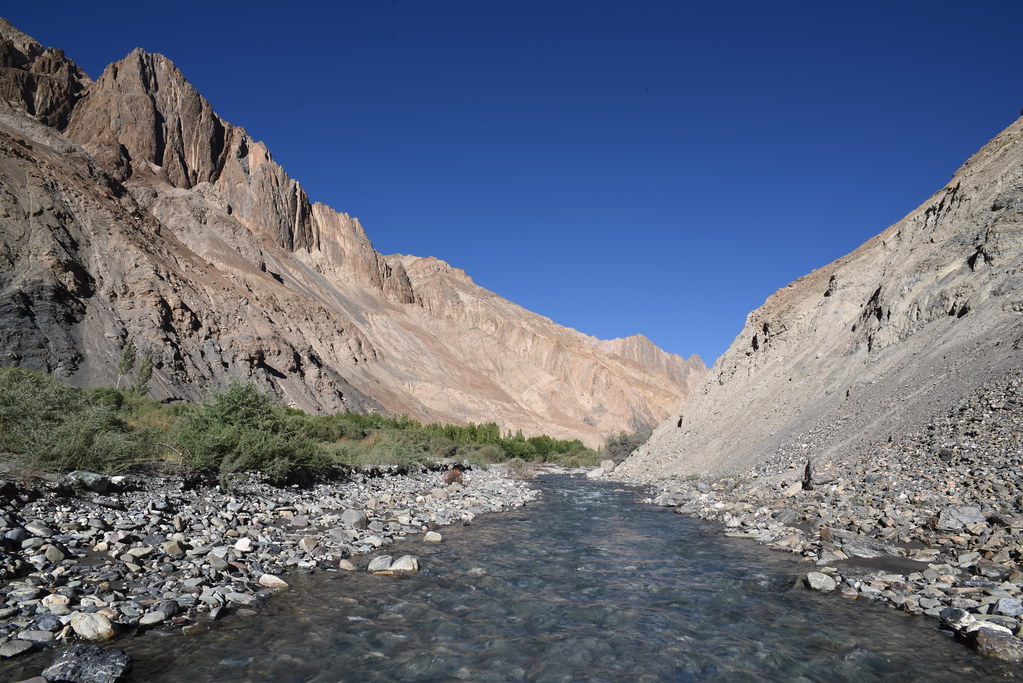
Why it’s special: This trek offers a stunning contrast of arid desert landscapes and green valleys. The route takes you through charming Ladakhi villages, high mountain passes, and monasteries, while providing a glimpse into the unique culture of the region.
Best time to go: June to September
Elevation: 16,500 ft (5,029 m)
Elevation Gain: Approx. 4,500 ft (1,372 m)
Trek Distance: 75 km (one-way)
Duration: 8–10 days
How to Reach: Reach Leh via flight, and then take a taxi or shared jeep to the starting point at Chilling.
Trek Description: Starting from Chilling, the trek passes through remote villages, wildflower meadows, and rugged terrain, eventually reaching the Markha Valley. The trek offers cultural experiences with visits to monasteries like Hemis and stunning views of Kang Yatse Peak. The local communities are involved in conservation efforts, and sustainable tourism initiatives like homestays are promoted to reduce the impact on the environment. This trek’s unique mix of flora, fauna, and eco-friendly practices makes it a strong contender among the top 10 treks in India.
Sustainable Tip: Respect local customs and wildlife. Use biodegradable soap and ensure no littering to preserve the pristine environment and respect local cultures while trekking. Find out how Ladakh is fostering sustainable tourism through community-based initiatives.
5. Roopkund Trek, Uttarakhand – A Mystical Experience in the Himalayas
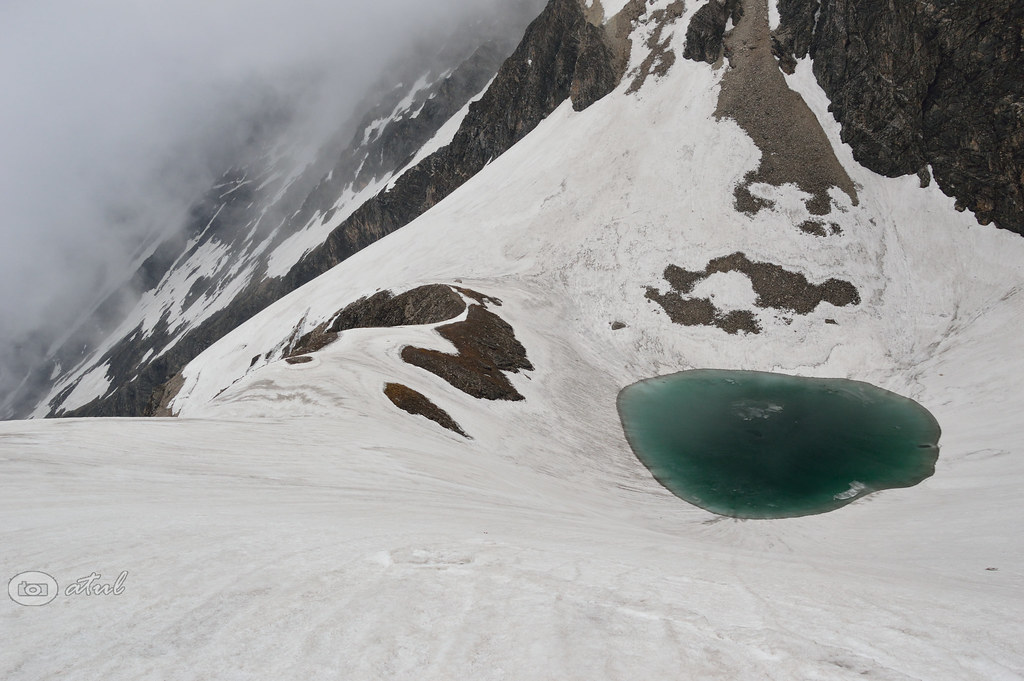
Why it’s special: Roopkund is famous for the mysterious human skeletons found in its lake, surrounded by the stunning beauty of snow-clad peaks and alpine meadows. The trek combines history, adventure, and natural beauty.
Best time to go: May to October
Elevation: 16,500 ft (5,029 m)
Elevation Gain: Approx. 4,800 ft (1,463 m)
Trek Distance: 53 km (round trip)
Duration: 8–9 days
How to Reach: Reach Rishikesh or Haridwar by train and take a bus or taxi to Lohajung, the starting point of the trek.
Trek Description: The trail takes you through dense forests, meadows, and snow-covered paths. Roopkund Lake is located amidst towering peaks and offers an eerie yet fascinating experience. The journey also passes by ancient temples and remote villages. To minimize waste and environmental impact, the local authorities have implemented a garbage collection program on the trek. Widely known as one of the top 10 treks in India, this trail offers more than adventure—it offers awareness.
Sustainable Tip: Stick to marked paths to avoid disturbing fragile alpine ecosystems. Opt for eco-friendly trekking companies that promote Leave No Trace practices. Read about the conservation efforts around Roopkund Lake on the Uttarakhand Tourism site.
6. Brahmatal Trek, Uttarakhand – A Hidden Gem for Sustainable Travelers
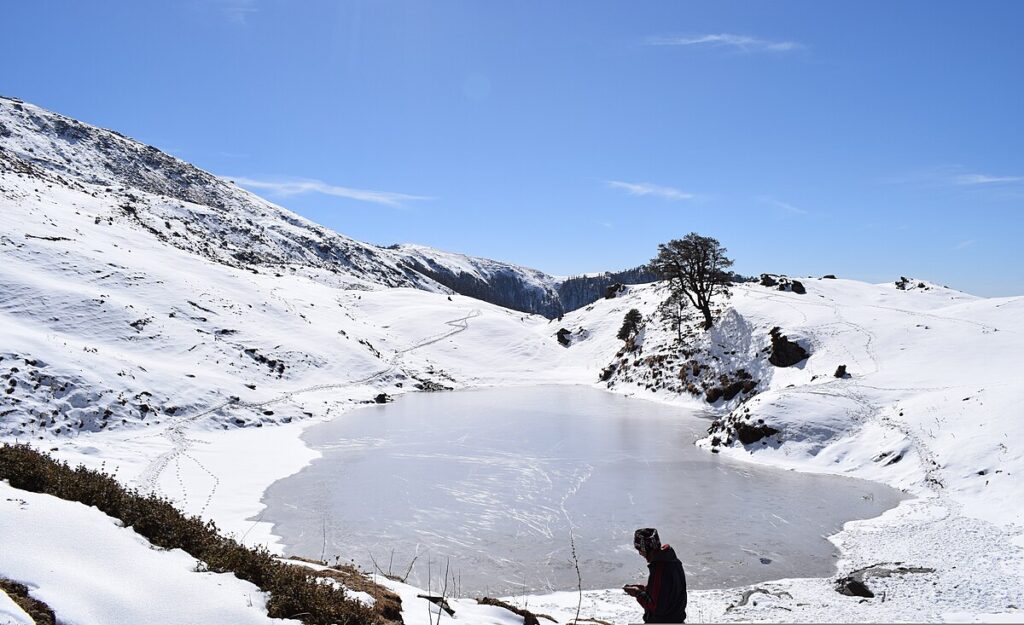
Why it’s special: This lesser-known trek offers magnificent views of the snow-covered peaks of Nanda Ghunti and Trishul, with a serene lake to top it off. It’s perfect for trekkers who want to avoid crowded trails and immerse in solitude.
Best time to go: December to March
Elevation: 12,250 ft (3,735 m)
Elevation Gain: Approx. 3,400 ft (1,036 m)
Trek Distance: 22 km (round trip)
Duration: 5–6 days
How to Reach: Reach Kathgodam by train or bus, and then take a taxi to Lohajung, the trek starting point.
Trek Description: The trek starts at Lohajung and leads to the Brahmatal Lake, which is surrounded by thick forests and snow-covered mountains. The clear lake mirrors the snow-covered peaks, making it a perfect place for photography. Local guides help manage the trek in a way that balances the environmental impact with tourism. Additionally, there are efforts to preserve the region’s diverse flora and fauna. This trek has earned its place in the top 10 treks in India thanks to its perfect blend of adventure and sustainability.
Sustainable Tip: Carry a reusable bottle and minimize plastic waste. Stick to the established trails to prevent erosion and preserve the landscape. Learn how to minimize your carbon footprint while trekking in the Himalayas.
7. Kedarkantha Trek, Uttarakhand – A Winter Wonderland
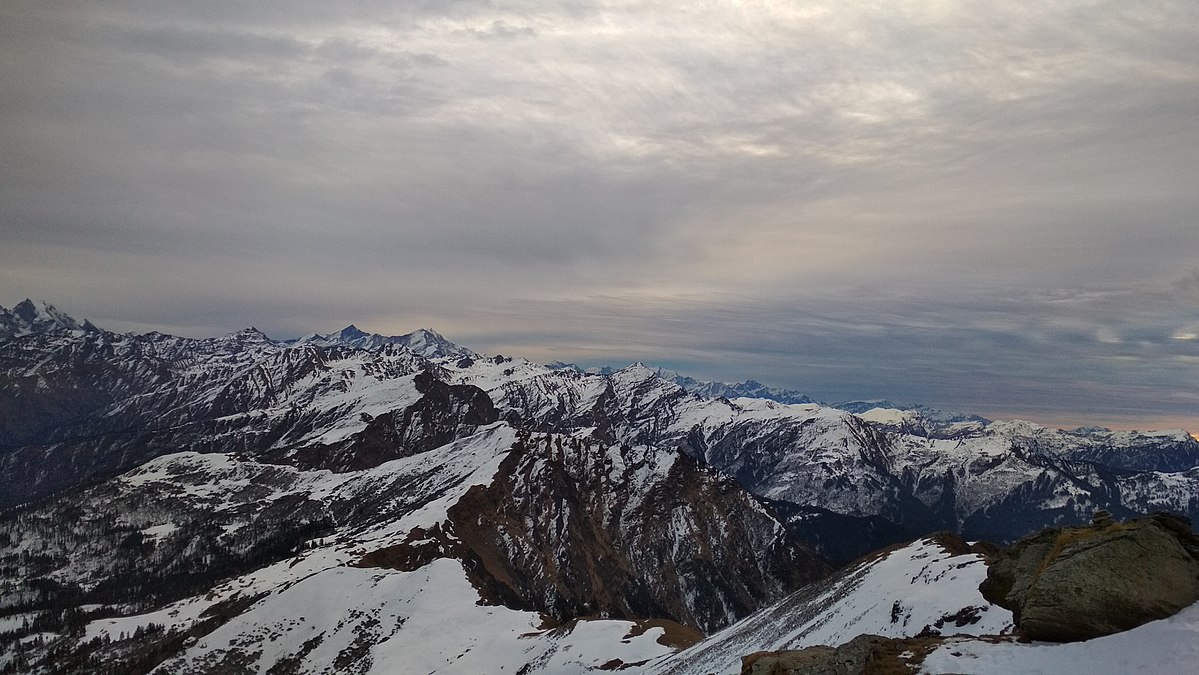
Why it’s special: Known for its incredible winter trekking experience, Kedarkantha is one of the best treks for beginners and seasoned trekkers alike. The stunning views of snow-covered mountains make it a picture-perfect destination for nature lovers.
Best time to go: December to April
Elevation: 12,500 ft (3,810 m)
Elevation Gain: Approx. 3,800 ft (1,158 m)
Trek Distance: 20 km (round trip)
Duration: 5–6 days
How to Reach: Reach Dehradun by train, and then take a bus or taxi to Sankri, the starting point of the trek.
Trek Description: The trek begins in Sankri and takes you through dense pine forests, snowy meadows, and beautiful campsites. The summit offers breathtaking views of the Himalayan peaks, including Swargarohini, Bandarpoonch, and Black Peak. The Kedarkantha Trek has become a popular winter destination, leading to an increase in the number of trekkers. However, local authorities are actively promoting responsible tourism practices to prevent environmental degradation. Ranked consistently in the top 10 treks in India, this route is a must for those who want to tread lightly on the planet.
Sustainable Tip: Choose trekking companies that prioritize waste management, such as providing compostable toilets and encouraging waste segregation. For tips on eco-friendly trekking equipment, check out our eco-gear guide.
8. Nanda Devi Base Camp Trek, Uttarakhand – A Journey to the Sacred Mountain
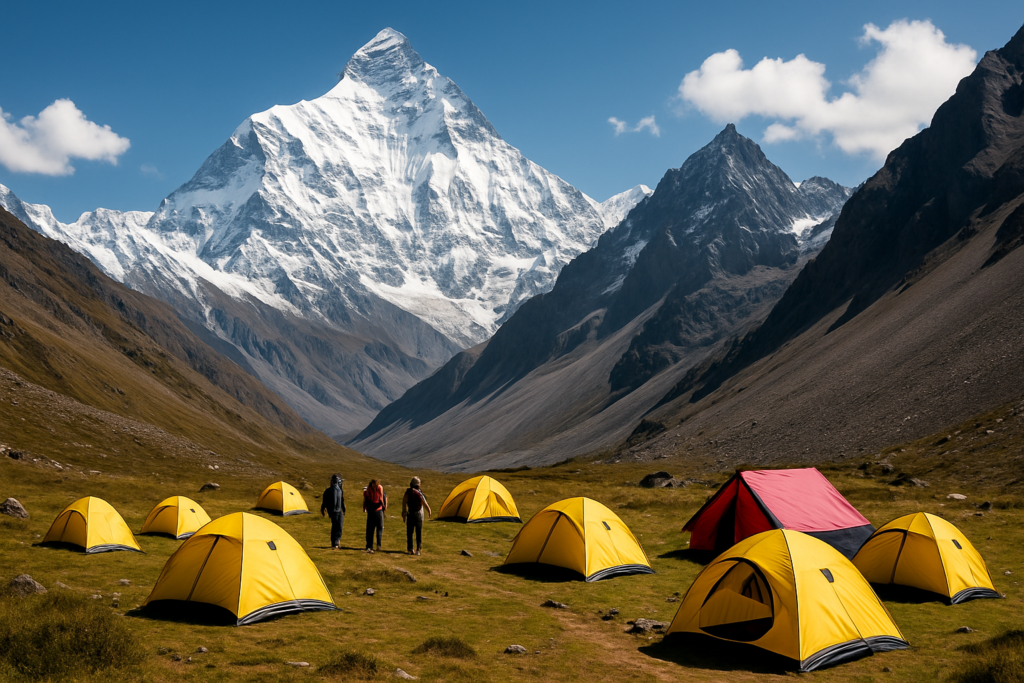
Why it’s special: The Nanda Devi Base Camp Trek takes trekkers through one of the most ecologically significant areas in the Himalayas. Nestled in the Nanda Devi Biosphere Reserve, this trek offers a unique opportunity to explore one of India’s most sacred mountains and pristine high-altitude landscapes. The area is home to diverse flora and fauna, and the trek itself is known for its untouched beauty.
Best time to go: May to October
Elevation: 14,000 ft (4,267 m)
Elevation Gain: Approx. 3,000 ft (914 m)
Trek Distance: 90 km (round trip)
Duration: 9–11 days
How to Reach: Reach Rishikesh or Haridwar by train or bus, and then take a taxi to Lata Village, the base for the trek.
Trek Description: The trek begins at Lata Village and leads through lush forests, meadows, and alpine landscapes. As you reach the Nanda Devi Base Camp, you’ll be rewarded with views of the towering Nanda Devi peak. The trek also passes through remote villages and provides a deep connection to the culture and nature of the region. Conservation efforts are a priority in the Nanda Devi region, and authorities are working to restrict tourism to preserve the biodiversity and sanctity of the area.
Sustainable Tip: Support local homestays and eco-friendly accommodations. Ensure minimal environmental impact by avoiding littering. Discover more about the Nanda Devi Biosphere Reserve and its conservation efforts on the Nanda Devi Biosphere Reserve Website.
9. Goecha La Trek, Sikkim
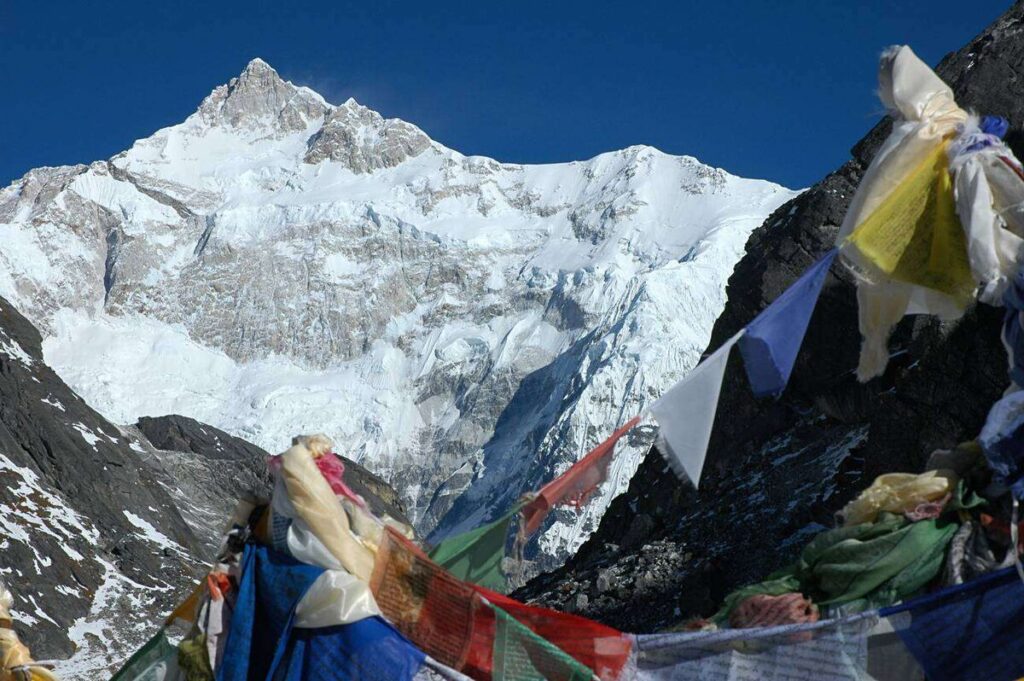
Why it’s special: Goecha La offers some of the most spectacular views of the Kanchenjunga range, the third-highest mountain in the world. The trek takes you through pristine forests, alpine meadows, and offers stunning high-altitude landscapes.
Best time to go: April to June, September to November
Elevation: 16,207 ft (4,940 m)
Elevation Gain: Approx. 6,500 ft (1,981 m)
Trek Distance: 90 km (round trip)
Duration: 10–12 days
How to Reach: Reach Gangtok by road, and then take a taxi to Yuksom, the starting point of the trek.
Trek Description: The trek starts in Yuksom and leads you through lush forests and alpine meadows, eventually reaching the Goecha La pass, from where you can see panoramic views of Kanchenjunga and surrounding peaks. Local conservation efforts are focused on keeping the trek’s environment pristine, with the government promoting eco-friendly trekking practices. As part of the top 10 treks in India, this journey offers both serenity and an opportunity to give back to nature.
Sustainable Tip: Follow all local rules regarding waste disposal and water management. Avoid disturbing the natural habitat of wildlife. Explore more about the Kanchenjunga Conservation Area and its sustainability efforts on the Sikkim Tourism website.
10. Sandakphu Trek, West Bengal
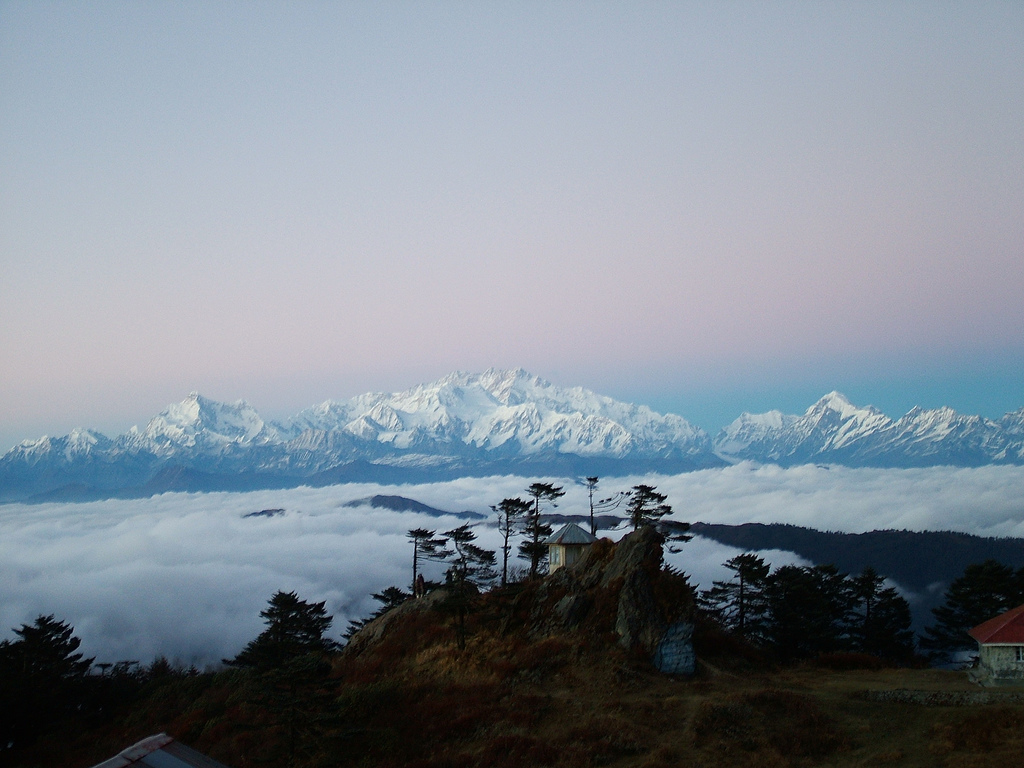
Why it’s special: Sandakphu, the highest point in West Bengal, offers a mesmerizing view of four of the highest peaks in the world—Everest, Kanchenjunga, Makalu, and Lhotse. This trek offers both natural beauty and cultural immersion with views of Nepal and Bhutan.
Best time to go: March to May, October to December
Elevation: 12,310 ft (3,770 m)
Elevation Gain: Approx. 4,500 ft (1,372 m)
Trek Distance: 51 km (round trip)
Duration: 6–7 days
How to Reach: Reach Siliguri by train or flight, and then take a taxi or jeep to the base at Manebhanjan.
Trek Description: The trek starts in Manebhanjan and passes through lush forests and alpine meadows, eventually reaching the summit of Sandakphu. Along the way, you’ll get a chance to interact with local communities from diverse cultural backgrounds. Sandakphu is increasingly becoming a popular trek, leading to efforts to promote sustainable tourism and community-based initiatives to reduce environmental harm.
Sustainable Tip: Stick to the trails and avoid damaging fragile ecosystems. Use eco-friendly trekking agencies to ensure minimal impact on the environment. Learn about the Sandakphu and Phalut Trek conservation efforts on the West Bengal Tourism website. Discover more about eco-friendly trekking practices in our sustainability section.
Conclusion
By choosing any of these top 10 treks in India for sustainable travel, you not only immerse yourself in some of the most breathtaking landscapes but also contribute to the preservation of nature. Sustainable trekking is more than just following eco-friendly practices—it’s about fostering respect for the environment, supporting local communities, and ensuring that these beautiful trails remain pristine for generations to come. So, next time you embark on a trek, remember to tread lightly, pack responsibly, and leave only footprints behind.
